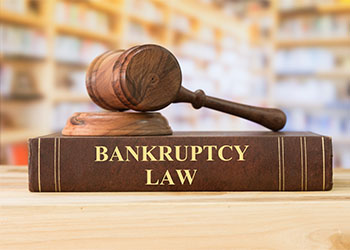Bankruptcy’s Effect on Employment Insurance (EI) Income
Aug. 24, 2023
 The Employment Insurance (EI) program provides temporary income to unemployed workers as they seek new employment. EI is premium-based, so individuals—even those who are self-employed—must have paid into the program in the year leading up to their need for it in order to qualify.
The Employment Insurance (EI) program provides temporary income to unemployed workers as they seek new employment. EI is premium-based, so individuals—even those who are self-employed—must have paid into the program in the year leading up to their need for it in order to qualify.
EI is also available for specific life events such as illness, pregnancy, caring for a newborn or newly adopted child, or caring for another who is critically ill or injured.
How does receiving EI factor into a bankruptcy filing in Canada? It is, after all, a source of income. Your EI will continue to be dispensed to you even if you are in bankruptcy, but like any source of income, it can be used to determine how long you will remain in the bankruptcy system. Creditors, however, cannot garnish EI.
If you are overwhelmed by debts in or around Toronto, Ontario, and have questions or concerns about filing for protection under Canada’s Bankruptcy and Insolvency Act (BIA), contact Matthew R Harris Law P.C. Lawyer Matthew Harris can answer your questions and guide you toward resolving your debts through the BIA. He also proudly serves clients in Hamilton, London, and Ottawa.
Understanding Bankruptcy in Canada
There are basically three types of bankruptcy in Canada: personal, small business, and corporate. Personal and small business are pretty much the same so long as the business is a sole proprietorship or a partnership. If the business is a corporation, then it must file for corporate bankruptcy.
To file for bankruptcy in Canada, you must meet three criteria:
You must be a Canadian resident.
You must owe more than $1,000 to creditors.
Your debts must be greater than your assets and/or you are unable to pay your bills when they are due.
Before filing for bankruptcy, you must consult with a Licensed Insolvency Trustee (LIT), who will assess your financial situation and recommend the type of bankruptcy you should pursue.
Payment Time in Bankruptcy
The Bankruptcy and Insolvency Act has a sliding scale much like child support guidelines to determine how long you must pay into your bankrupt estate in order to be discharged. Any source of income is used in the calculation, including income from all members of your family and your EI as well.
Note, however, that a payment schedule is largely based on “surplus” income, which is determined by the trustee. Here is how long you will be in bankruptcy depending on your income and other factors:
first-time bankrupt, no surplus income: 9 months
first-time bankrupt, surplus income: 21 months
second-time bankrupt, no surplus income: 24 months
second-time bankrupt, surplus income: 36 months
third-time bankrupt – determined by the court
You might think, if your only income is EI, that you might be able to avoid a bankruptcy filing altogether since creditors cannot garnish your government EI payment. However, they can get writs against your bank account and take the money that way. A bankruptcy filing will immediately halt such actions, and the trustee will work out a program and schedule for you.
The Consumer Proposal Alternative
Rather than filing for bankruptcy protection, it is also possible to work out a reduced payment plan with your creditors under what is called a Consumer Proposal. This can help you hold onto assets that might otherwise be sold to help pay creditors. Creditors may be willing to go along with your proposal because they will receive at least part of what you owe them, whereas in bankruptcy they may get little or nothing.
What Happens to EI Payments if a Business Goes Bankrupt?
If a business that has been paying into the EI program for its employees goes bankrupt and the trustee continues to operate the business, then the trustee will be responsible for handling EI premiums, income tax, and other obligations. The trustee to do this must obtain a new business number.
If a bankrupt employer has deducted EI premiums but not remitted them, and the business is in bankruptcy or being liquidated, then the trustee must hold those EI funds in trust. The same goes for contributions to the Canada Pension Plan (CCP) that have not been remitted.
Speak With a Lawyer to Learn More
If you or your business are having trouble paying your obligations and need clarification about bankruptcy or a Consumer Proposal, place your trust in Matthew R Harris Law P.C. Lawyer Matthew Harris can advise you of your options and help you get back on track for a more secure financial future. His Toronto, Ontario, firm proudly serves consumers and businesses throughout Hamilton, London, and Ottawa.